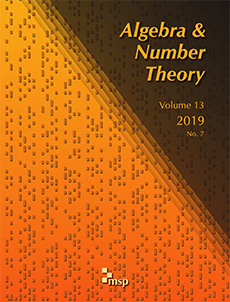Abstract
If is an elliptic curve defined over and is a prime of good reduction for , let denote the set of points on the reduced curve modulo . Define an arithmetic function by setting . Recently, David and the third author studied the average of over certain “boxes” of elliptic curves . Assuming a plausible conjecture about primes in short intervals, they showed the following: for each , the average of over a box with sufficiently large sides is for an explicitly given function .
The function is somewhat peculiar: defined as a product over the primes dividing , it resembles a multiplicative function at first glance. But further inspection reveals that it is not, and so one cannot directly investigate its properties by the usual tools of multiplicative number theory. In this paper, we overcome these difficulties and prove a number of statistical results about . For example, we determine the mean value of over all , odd and prime , and we show that has a distribution function. We also explain how our results relate to existing theorems and conjectures on the multiplicative properties of , such as Koblitz’s conjecture.
Citation
Greg Martin. Paul Pollack. Ethan Smith. "Averages of the number of points on elliptic curves." Algebra Number Theory 8 (4) 813 - 836, 2014. https://doi.org/10.2140/ant.2014.8.813
Information





